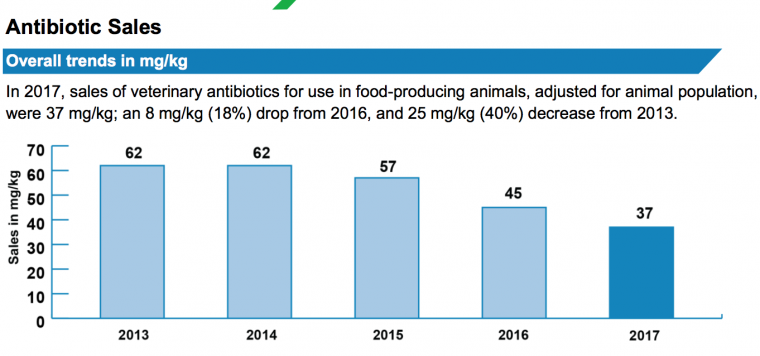According to VARSS-2017 antibiotic use in animals has fallen sharply once again, and in patterns which reflect the focus on responsible use.
The focus this year was on resistance monitoring in zoonotic and commensal bacteria from pigs and the data show that resistance to HP-CIAs in indicator E. coli from healthy pigs at slaughter was not detected or remained low.

Overall trends in mg/kg In 2017, sales of veterinary antibiotics for use in food - producing animals, adjusted for animal population, were 37 mg/kg ; an 8 mg/kg (18%) drop from 2016 , and 25 mg/kg (40%) decrease from 2013.

Total eMB recorded antibiotic usage in pigs decreased by 52 mg/kg (28 %) from 183 mg/kg in 2016 to 131 mg/ kg in 2017. This means that total usage decreased by 147 mg/kg (53%) over the last two years. The majority of active ingredient in 2017 was used as a premix (78%) , followed by oral (19%) and injection (3%). Tetracyclin es represented 43% of antibiotic used, with penicillins, trimethoprim / sulphonamides and macrolides representing a further 45%. Reductions were seen across all antibiotic classes. However, the biggest falls occurred with trimethoprim/sulphonamides, which decreased by 46 mg/kg (69%) and tetracyclines, which decreased by 62 mg/kg (53%). Penicillins decreased by 15 mg/kg (39%) and now represent the second most used antibiotic class in pigs.
Wednesday Octobre 24, 2018/ DEFRA/ United Kingdom.
https://www.gov.uk





